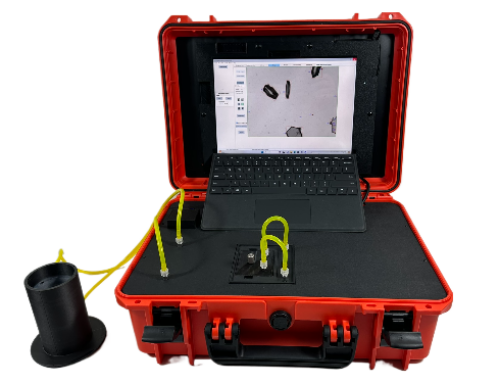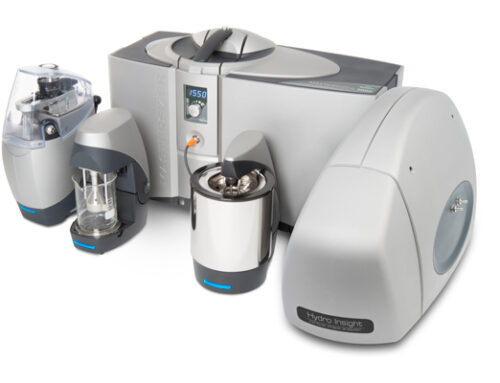In the dynamic world of drilling operations, achieving peak efficiency is a complex and multifaceted challenge. A critical but often overlooked aspect in this realm is the role of advanced particle size and shape analysis. This innovative approach to particle analysis revolutionizes our understanding and optimization of materials in drilling processes.
Understanding Particle Analysis in Drilling#
Drilling operations critically depend on the precise use of various materials, such as drilling muds, barite, and lost circulation materials (LCM). These materials significantly influence the drilling process’s efficiency, safety, and cost-effectiveness. Understanding their particle size and shape characteristics is pivotal in optimising their performance. Studies have shown that particle characteristics directly impact the rheological properties of drilling fluids and the mechanical stability of the wellbore.
Why Particle Shape and Size Matter#
Particle size is a fundamental factor in drilling efficiency. In drilling muds, for instance, the size of particles affects the mud’s viscosity, filtration properties, and overall performance. Smaller particles have been found to increase fluidity and improve penetration rates, whereas larger particles play a critical role in effective wellbore stabilization. A study by Hafez et al. (2021) investigated the role of particle shape on packing density and mechanical properties of granular media, revealing that particle interlocking governs the behavior of non-convex particles, while face-to-face aggregation leads to high packing densities in faceted particles. This highlights its importance in operational efficiency.Particle shape analysis offers additional insights that size alone cannot provide. The shape of particles in drilling muds influences their capacity to carry cuttings to the surface and their efficiency in sealing wellbore walls. For example, irregularly shaped particles may offer better wall-building characteristics than spherical ones.
Advanced Particle Analysis Technologies#
Dynamic image analysis (DIA) has emerged as a leading technology in particle analysis. This technique captures high-resolution images of particles and analyzes them to provide detailed size and shape information. Unlike traditional sieving methods, DIA offers a more comprehensive and accurate analysis, essential for high-precision applications like drilling.
Applications in Drilling#
- Barite Analysis: Barite is a key component in drilling muds, utilized for its weight and density to control well pressure. Utilizing DIA, the optimal size and shape of barite particles can be ensured, enhancing mud performance and drilling efficiency.
- Lost Circulation Material (LCM) Characterization: Advanced particle analysis aids in selecting the right LCM with ideal size and shape properties, ensuring effective wellbore sealing.
- Drilling Mud Optimization: DIA assists in optimizing the composition of drilling muds. By analyzing particle size and shape distribution, drilling engineers can formulate highly effective and efficient muds tailored to specific drilling conditions.
Impact on Drilling Efficiency#
Applying advanced particle size and shape analysis in drilling operations significantly enhances efficiency. With a more precise understanding of the materials involved, drilling engineers can:
- Enhance Drilling Speed: Optimized particle characteristics in drilling muds lead to faster penetration rates, reducing drilling time.
- Improve Wellbore Stability: Accurate particle size and shape analysis ensure the use of materials that effectively stabilize the wellbore, minimizing disruptions.
- Reduce Material Costs: Precisely tailoring particle characteristics to the needs of the drilling operation minimizes wastage, leading to significant cost savings.
The Future of Drilling: Embracing Advanced Analysis#
As drilling technologies evolve, adopting advanced particle analysis techniques becomes increasingly critical. These technologies provide a nuanced understanding of drilling materials and pave the way for innovative drilling practices, enhancing efficiency and sustainability. The potential for these technologies extends beyond current applications, with research ongoing into novel ways to further integrate particle analysis into predictive maintenance and real-time adjustment of drilling operations.
Learn More: Introducing Portable Particle Size and Shape Analysis
Integrating advanced particle size and shape analysis in drilling operations marks a significant leap towards more efficient, cost-effective, and environmentally friendly drilling practices. By embracing these technologies, the drilling industry is poised to achieve unparalleled precision and efficiency, setting new standards.
A Commitment to Advanced Particle Analysis#
At Vision Analytical, our commitment extends beyond providing state-of-the-art analysis tools. We endeavor to empower the drilling industry with knowledge and technology that revolutionize efficiency and quality. We invite you to join us in this quest for excellence. By incorporating our advanced particle size and shape analysis technologies into your operations, we can unlock a new level of drilling efficiency, reduce environmental impact, and pave the way for a more sustainable future in the drilling industry. Let’s shape the future of drilling, one particle at a time.
References#
- Hafez, A., Liu, Q., Finkbeiner, T. et al. The effect of particle shape on discharge and clogging. Sci Rep 11, 3309 (2021). https://doi.org/10.1038/s41598-021-82744-w







